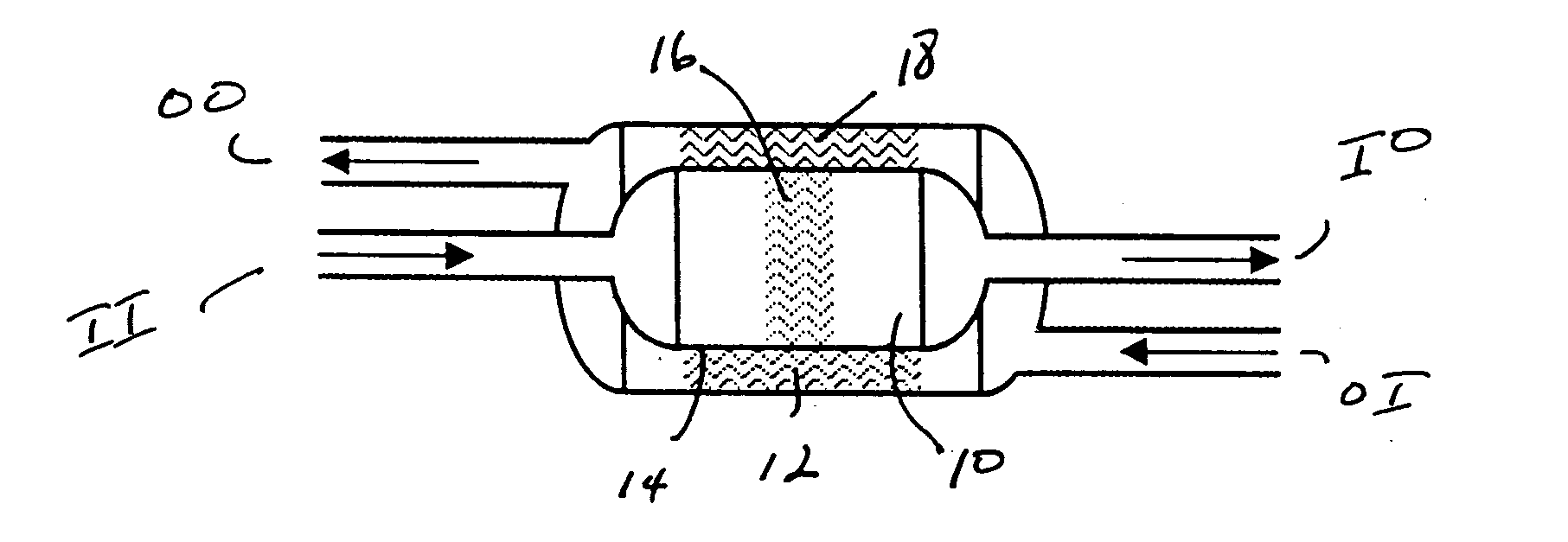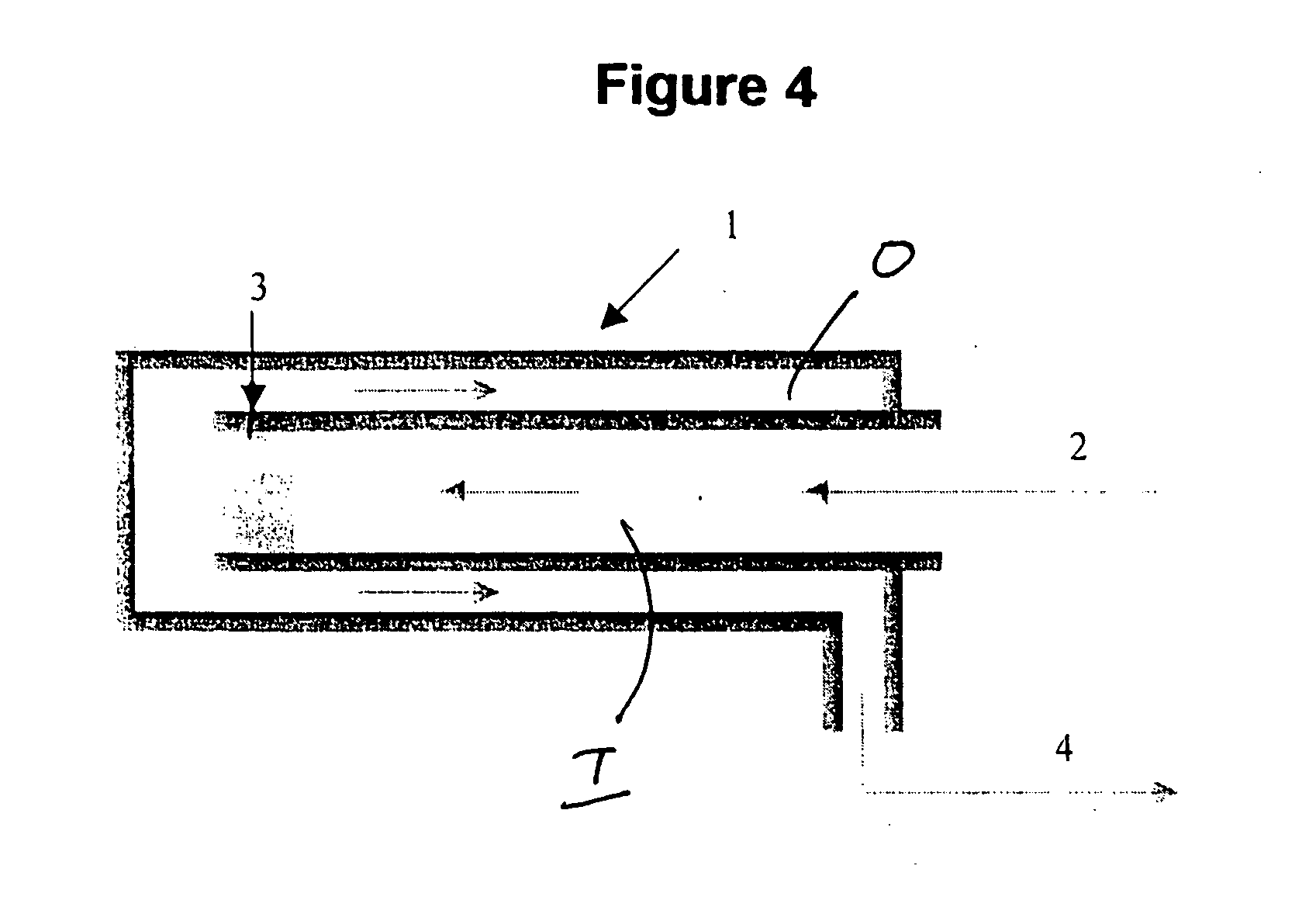Production of hydrogen by autothermic decomposition of ammonia
a technology of ammonia decomposition and ammonia decomposition, which is applied in the direction of physical/chemical process catalysts, gas-gas reaction processes, metal/metal-oxide/metal-hydroxide catalysts, etc., can solve the problems of ammonia decomposition by conventional methods that cannot be used for on-board hydrogen feed to fuel cells, and the steam reforming is generally limited to paraffini
- Summary
- Abstract
- Description
- Claims
- Application Information
AI Technical Summary
Benefits of technology
Problems solved by technology
Method used
Image
Examples
Embodiment Construction
[0025] The present process relates to the use of an ammonia decomposition catalyst, preferably a heterogeneous transition metal catalyst in a gas-solid chemical reactor to catalyze the decomposition of ammonia to product hydrogen and nitrogen. The ammonia decomposition reaction is an endothermic reaction and thus cannot sustain itself without the addition of heat. It has been discovered by the inventors hereof that the ammonia decomposition reaction can be made autothermic, that is, without the need for added heat from an outside source. Autothermal operation occurs when an exothermic reaction continues to drive itself as well as a coupled endothermic reaction. This is accomplished by combusting a portion of the product hydrogen in the same reaction zone in which ammonia decomposition is taking place. For each mole of ammonia that is completely oxidized, enough heat is generated to decompose approximately 5.7 moles of ammonia.
[0026] The exothermic combustion of hydrogen generates r...
PUM
| Property | Measurement | Unit |
|---|---|---|
| temperatures | aaaaa | aaaaa |
| atomic numbers | aaaaa | aaaaa |
| temperature | aaaaa | aaaaa |
Abstract
Description
Claims
Application Information
 Login to View More
Login to View More - R&D
- Intellectual Property
- Life Sciences
- Materials
- Tech Scout
- Unparalleled Data Quality
- Higher Quality Content
- 60% Fewer Hallucinations
Browse by: Latest US Patents, China's latest patents, Technical Efficacy Thesaurus, Application Domain, Technology Topic, Popular Technical Reports.
© 2025 PatSnap. All rights reserved.Legal|Privacy policy|Modern Slavery Act Transparency Statement|Sitemap|About US| Contact US: help@patsnap.com



